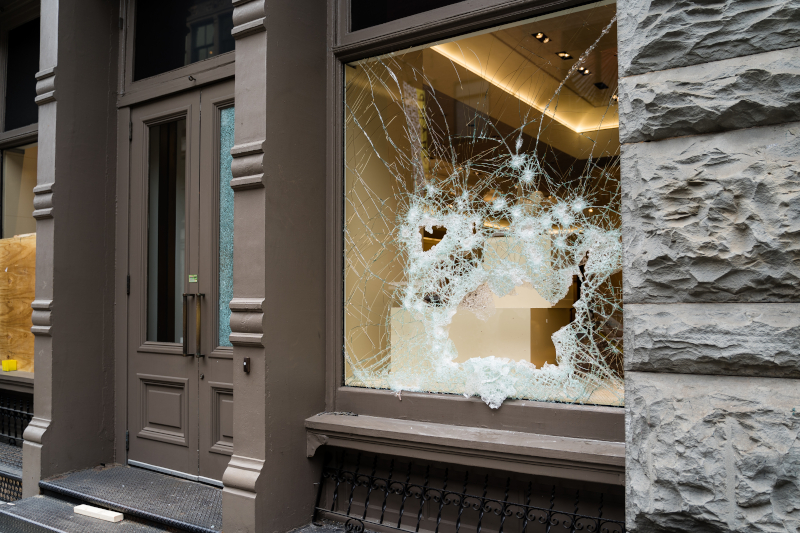
08 Jun Business Insurance a Case Study
Imagine the scene: you go to your business premises to start work, whether it’s a café, retail outlet or workshop, and you find that there’s been a break-in. There’s a small amount of damage, (maybe damaged doors or a smashed window) and some goods or equipment have been taken. The place is a mess and you have to close your business for the day to clear up.
How do you estimate the true value of your claim? Here we take a look.
Calculating a claim
Initially, you might think that it’s just the cost of the lost stock or equipment and the property repairs that you would be able to claim as losses, but there are other items to consider.
Depending on the level of your business insurance cover, and especially if you have a policy which is described as ‘comprehensive’ or ‘all risk’ you should consider the following.
- Damaged items: In addition to the stolen stock/equipment, was any other stock/equipment damaged or contaminated as a result of the incident? Perhaps the break-in damaged electrics which turned off a refrigerated display and the goods have spoiled. Or perhaps glass shards from a smashed window affected other items which could then not be sold or used any more. If you need to replace items that were damaged during an incident and need to be replaced, these should be added to your claim.
- Closure: Even a very short closure or inability to trade should be considered as business interruption. If you have to close for a morning to clean up the mess or you lose a job due to loss of tools, this is an interruption and you should claim for calculable losses.
- Additional payments: If you have to pay members of your team extra wages or overtime as a result of the incident you should claim for the additional costs. Perhaps an employee comes in on their day off to help clean up, or you have to hire replacement tools and equipment to carry out booked jobs, these are additional losses that should be included in your claim.
- Loss of business: If there is evidence that the incident caused longer term loss of business, or any ‘ripple-effect’ of loss of confidence which sees typical takings going down, this should be calculated and added to the claim.
- It’s easy to just look at the scene and tot up the value of what was taken in a break-in, but this is never the true cost of such an incident, and the long-term effects can be considerable.
Speak to your business insurance broker
As your insurance broker, we probably know you and your business better than most people and we aim to make any claim as stress-free and complete as possible.
Here are our top tips when making a business insurance claim:
- If you have ‘comprehensive’ business insurance, you should be able to claim for all losses relating to the insured event.
- Your insurance company may not prompt you about all the items you are able to claim for, such as hidden losses including, extra wages, hire costs, replacing damaged items, and loss of customer confidence.
- Talk to your business insurance broker about your claim, ask their advice about the situation and ask them to help you put your case together.
Tredstone business insurance – protecting you and your business
If you want to know more about how Tredstone, powered by City Insurance, could help your business get the insurance and liability cover it needs, call us now on 0345 6461395.
Our skilled customer service team can help you build the business insurance package that’s right for your needs.







No Comments